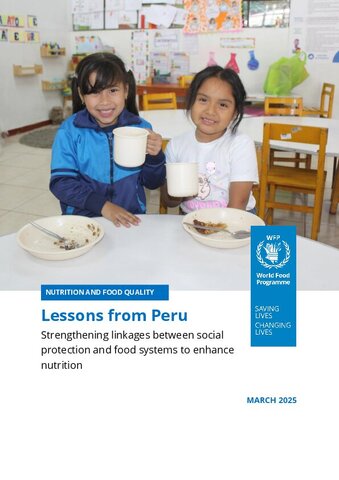
Peru has been classified as an upper-middle-income country since 2008 but has seen a resurgence in monetary poverty since 2017, alongside persistent socioeconomic inequalities. These have resulted in a lack of access to nutritious and diverse diets in both urban and rural areas, contributing to a population that now experiences the double burden of malnutrition. Specifically, Peru is characterized by a continued anaemia prevalence that is higher than the rest of the region, linked to significant overweight and obesity rates. In response, the World Food Programme (WFP) has adopted a 'country capacity strengthening' approach to enhance the food system’s contribution to improved nutrition. This has been implemented by leveraging the national school feeding programme Qali Warma along two cases: 1) combating anaemia through large-scale rice fortification; and 2) improving diets and contributing to the prevention of overweight and obesity through local food procurement.
